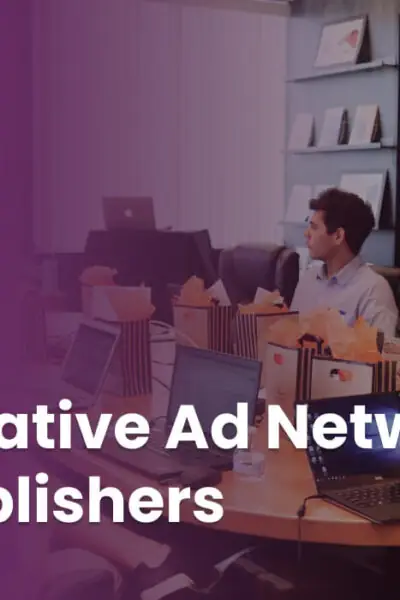In May 2024, State of Digital Publishing (SODP) hosted Monetization Week – an online event for digital publishing and news media professionals.
This article is based on the summary of key learnings of a presentation by Ivo Bobal, Publisher Development Manager, Romania at Geozo.
Publisher ad revenues are taking a hit due to the rising use of ad blocker software and plug-ins in recent years. Can native ads help boost publisher revenues going forward?
What Are Native Ads?
Native ads are online ads that seamlessly blend with the content displayed on websites. They are designed to match the look, feel, and overall function of the media in which they appear, making them less intrusive than traditional banner ads.
At least 90% of the time, native ads are pay-per-click (PPC) advertisements. They are recommended for performance digital advertising because native ads’ main purpose is to drive leads and sales. They can also generate brand awareness.
Common Myths About Native Ads That Are False
Native ads overload websites and don’t mix well with other formats – False
This is a common misconception. The reality is the other way around. Native ads are built to look exactly like content, built to create engagement. And they are meant to look like part of the website, to be as natural as any other content.”
There is a strategic approach to the placement of native ads to reduce overload and avoid diminished performance. Middle of the article and end of the article are great spots to place native ads in terms of CPM. Meanwhile, banners work better on sidebars and headers.
Native ads are deceptive – False
Native ads don’t necessarily have to be deceptive by default. “There is a fine line between how a related article works and how native ad placement looks. Sometimes they blend so well that they might not be recognized as being ads,” explained Ivo Bobal from Geozo.
To overcome this potential for deception, Ivo recommends the following steps:
- Mark the advertising blocks with the logo of the native ad platform
- Ensure adequate moderation to weed out misleading ads
- Provide information within the advertising content to help the reader
Banners are more profitable than native ads – False
Banners and native ads are not meant to compete – they are supposed to complement each other and boost publisher revenues. That said, there are some areas where native ads have a clear advantage over banners:
- Native ads can have up to 3x higher CTR
- Native ads can boost engagement by up to 60%
- Native ads can generate up to 95% more clicks
Users don’t trust promotional content – False
According to a Time Inc. survey of 17,000 young users (Millennials, Gen Z, and Gen X):
- 92% believe that brands can add value to content
- 56% like brands that share/teach something cool rather than just sell things
If brands put more effort into making creative and informative ads, those ad campaigns have a high chance of being well-received by modern audiences.
Native ads is a new form of advertising – False
Native advertising dates back to the 19th century.
The first ever native ad campaign was launched by John Deere in 1895. The agricultural equipment manufacturer launched a magazine for farmers called “The Furrow.” It contained useful articles that also subtly mentioned the company’s tools. The magazine gained 4 million subscribers and generated record sales for John Deere.
All native ads look the same – False
Native ads are like cars – they all share some common traits like four wheels and similar shapes etc. However, like cars, native ads can also be customized. Some options include using icons and labels, adding gradients to draw attention to specific areas, and so on.
The revenue with native ads is unpredictable – False
Revenue calculation in PPC advertising is not an issue if you have the following things:
- The website statistics
- An understanding of the market dynamic
- Awareness about the seasonality of traffic
Common Myths About Native Ads That Are True
While the majority of the myths associated with native ads have no factual basis, the same cannot be said about the following three statements:
Native ads cannot be blocked – True
This is a major advantage of native ads for publishers since 32.5% of internet users use ad blockers while surfing online. Ad blocking is projected to cause $54 billion in lost advertising revenues in 2024.
Content from our partners
Ad blockers primarily target traditional banners and pop-ups and cannot reliably detect native ads.
Native advertising supports SEO – True
Product hyperlinks placed inside native ads are seen as live backlinks by many search engines. Having live backlinks on thousands of websites can increase a publisher’s trusted score.
Native ads can boost organic rankings through increased coverage, shares, mentions, etc, improving SEO in the process.
Native ads improve product reputation – True
Ads placed on premium media like news platforms can significantly improve product reputation. Consumers are more likely to trust brands that advertise within news media. The common perception is that established media platforms would not promote products with a bad reputation.
Download the ebook of learnings from Monetization Week here.












